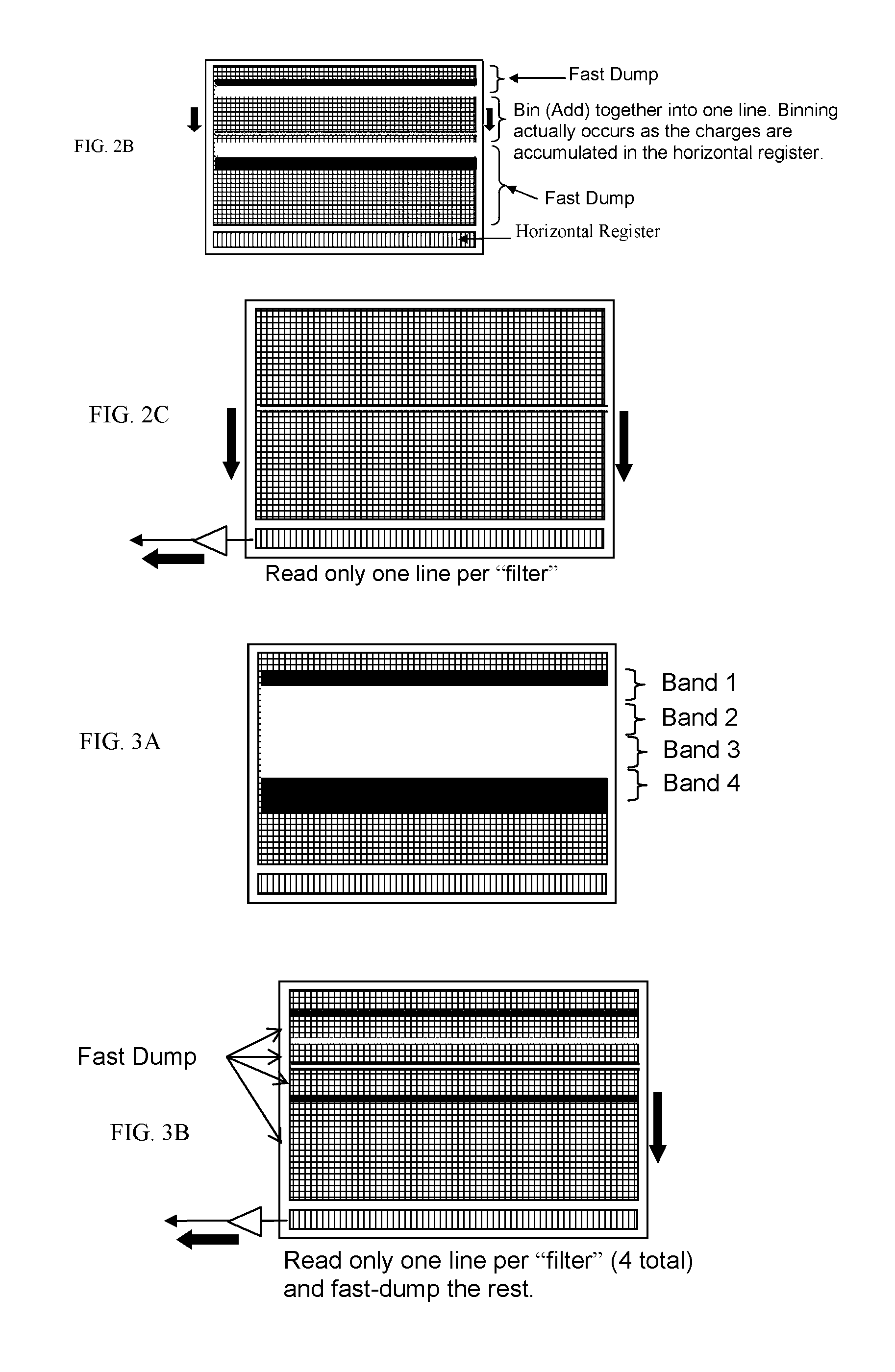On-chip spectral filtering using CCD array for imaging and spectroscopy
a spectral filtering and array technology, applied in the field of imaging and spectral analysis, can solve the problems of slow approach, inability to easily change, and limited number of separate fluorescence emission and detection channels
- Summary
- Abstract
- Description
- Claims
- Application Information
AI Technical Summary
Benefits of technology
Problems solved by technology
Method used
Image
Examples
Embodiment Construction
[0031]According to one embodiment of the invention, a CCD (charge-coupled device) array detector is used for hyperspectral imaging and filtering. A CCD array consists of a matrix of pixels that are sensitive to light. In response to the impingement of light photons, individual pixels in the array generate a charge of electrons, the amount of which varies in proportion to the magnitude of light photons interacting with the pixel areas and proportional to exposure time. The resulting electrical signals are read out of the array and are interpreted to correspond to the amount of light that generated the electrical charges in the pixel layers. The most common CCD architectures used in the instrumentation industry today are Full-Frame, Frame Transfer, and Interline (progressive) Transfer. In the former two, the pixels are typically constituted by photodiodes and the generated charges from the pixels of the entire array are read out directly or transferred simultaneously to another storag...
PUM
 Login to View More
Login to View More Abstract
Description
Claims
Application Information
 Login to View More
Login to View More - R&D
- Intellectual Property
- Life Sciences
- Materials
- Tech Scout
- Unparalleled Data Quality
- Higher Quality Content
- 60% Fewer Hallucinations
Browse by: Latest US Patents, China's latest patents, Technical Efficacy Thesaurus, Application Domain, Technology Topic, Popular Technical Reports.
© 2025 PatSnap. All rights reserved.Legal|Privacy policy|Modern Slavery Act Transparency Statement|Sitemap|About US| Contact US: help@patsnap.com



